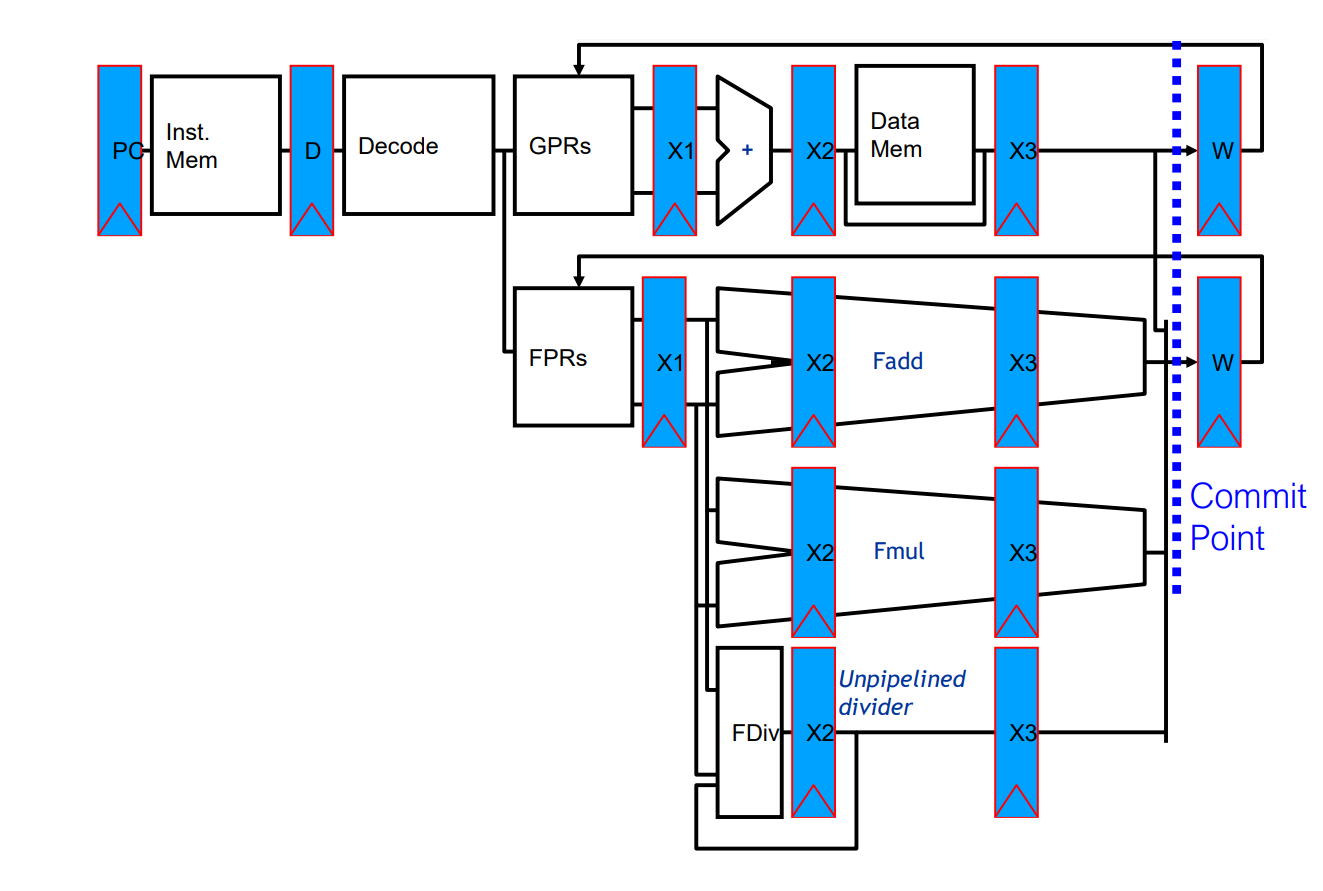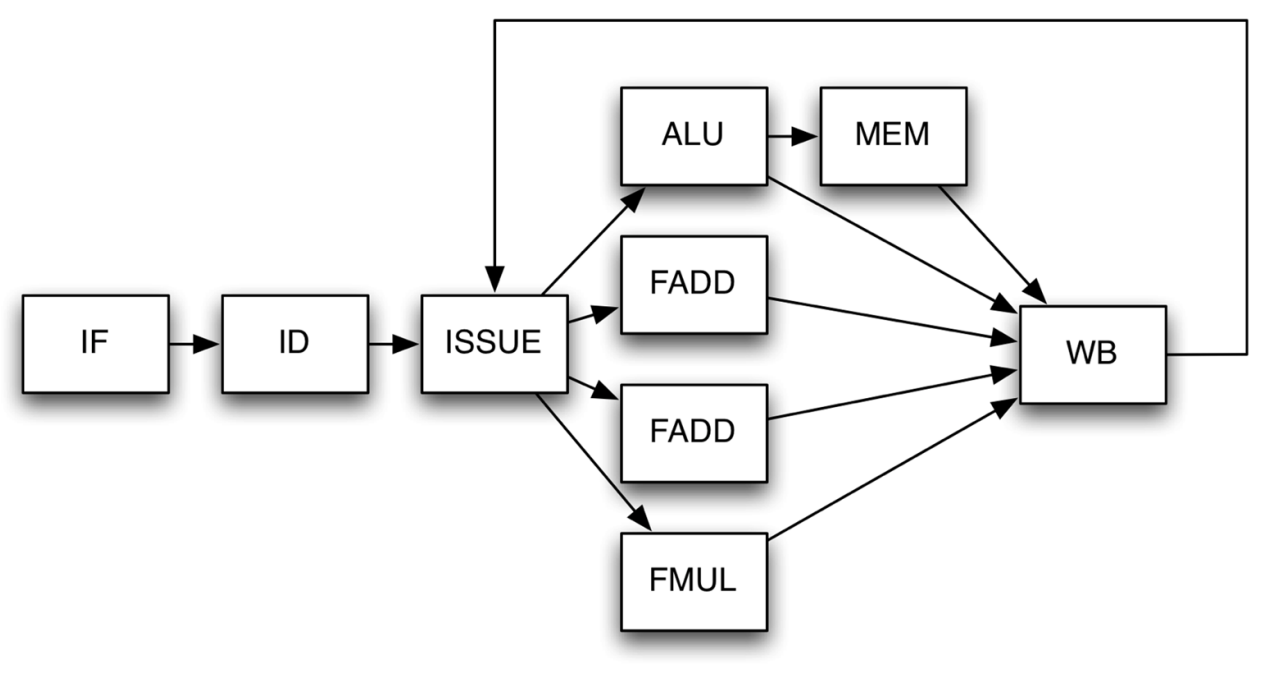Complex Pipeline
Moving towards to a more complex pipeline: pipelining becomes complex when we want high performance in the presence of:
- Long latency or partially pipelined floating-point units
- Multiple function and memory units
- Memory systems with variable access time
- Precise exception (divisions by zero, underflow and overflow at hardware level)

General purpose registers (GPRs) contain information being manipulated by the user program currently running. Floating-point registers (FPRs) hold numeric values associated with some exponent.

Complex Pipeline main features
- All functional units are pipelined
- Instructions are fetched, decoded and issued in order (always in this course)
- Issue stage can be seen as an infinite buffer.
- Generally it’s assumed that the WB unit has a single write port
- RF can write first half of the CC and Read in the second half. (so IS aligned with WB)
- Only one instruction can be issued at a time, and in the case multiple instructions are ready, the oldest one will go first
What to remember in the Complex Pipeline
- Decode stalling if it is causing a WAR or WAW hazard.
- Issue stalling if RAW
- EX stalling iff structural hazard on writing port
Example:
| Instruction | C1 | C2 | C3 | C4 | C5 | C6 | C7 | C8 | C9 | C10 | C11 | C12 |
|---|---|---|---|---|---|---|---|---|---|---|---|---|
LD F1, O(R1) | F | D | IS | E1 | E2 | E3 | WB | |||||
LD F2, O(R1) | F | D | IS | E1 | E2 | E3 | WB | |||||
ADDD F1, F1, F2 | F | sD | sD | D | sIS | IS | E1 | E2 | E3 | WB | ||
ADD R1, R1, 8 | sF | sF | F | D | sIS | IS | E | WB |